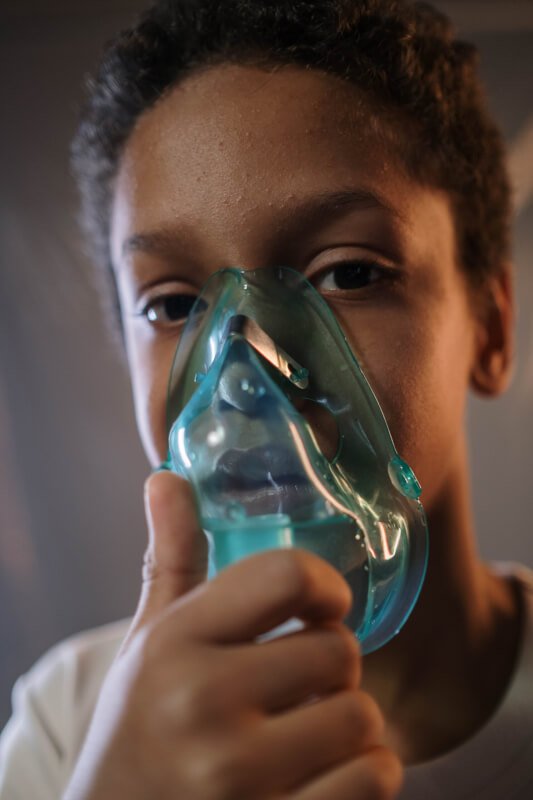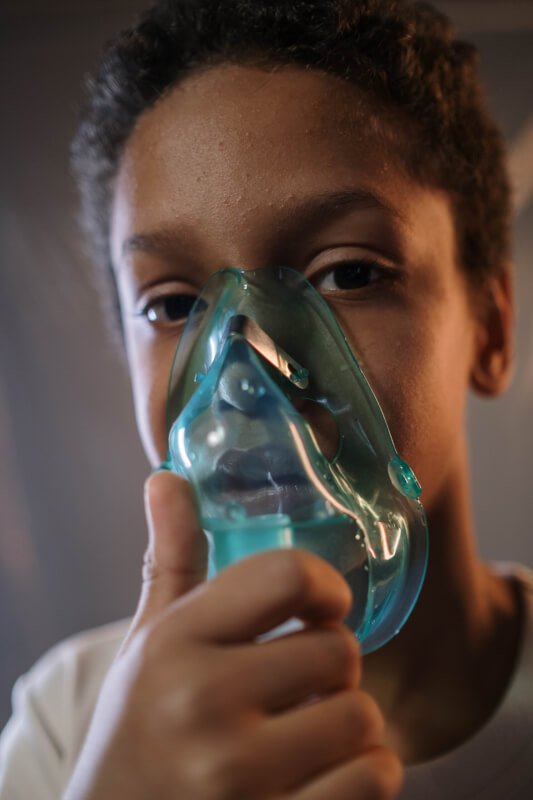In need of a quick guide to handle emergency situations? Look no further than “Here To Help: First Aid Handbook”. This comprehensive handbook is specifically designed to equip you with the necessary knowledge and skills to handle potential accidents and medical emergencies. From administering CPR to treating burns, this informative guide is your trusted companion, ready to assist you in moments of crisis. So, let’s get started and empower ourselves with life-saving techniques that can make a real difference.

Here To Help: First Aid Handbook
Welcome to the comprehensive guide on first aid! Whether you’re a concerned parent, a responsible citizen, or simply someone who wants to be prepared for emergencies, you’ve come to the right place. In this article, we will cover a wide range of topics related to first aid, including basic principles, common injuries and emergencies, CPR and basic life support, treating specific injuries, childhood first aid, emergency preparedness, first aid for environmental risks, first aid for poisons and overdoses, and psychological first aid.
1. Basic Principles of First Aid
1.1 Assessing the Situation
In any emergency, the first step is to assess the situation. Take a moment to evaluate the scene and ensure it is safe for you and the victim. Look for any immediate dangers, such as fire, traffic, or falling objects. If it’s safe to approach, move on to the next step.
1.2 Ensuring Safety
Safety is paramount when providing first aid. Make sure you protect yourself and the victim from further harm. This can involve taking precautions such as wearing gloves or creating a barrier between yourself and bodily fluids. By prioritizing safety, you can effectively provide the necessary care without putting yourself or others at risk.
1.3 Activating Emergency Services
In many cases, activating emergency services is crucial. This involves calling for professional help by dialing the appropriate emergency number for your location. Provide clear and concise information about the situation, including the type of injury or emergency and the address where assistance is needed. Remember, time is of the essence in many emergencies, so don’t hesitate to call for help.
1.4 Providing Initial Care
Once you have assessed the situation, ensured safety, and activated emergency services if necessary, it’s time to provide initial care to the victim. This can include basic actions like controlling bleeding, immobilizing fractures, or providing comfort and reassurance. However, it’s important to remember that first aid is not a substitute for professional medical care. It is simply the immediate assistance provided until help arrives.

2. Common Injuries and Emergencies
2.1 Burns
Burns can happen in various situations and can range from minor to severe. It’s important to assess the severity of the burn and take appropriate action. For minor burns, cool the affected area under cold running water for several minutes and cover with a sterile dressing. For more severe burns, it’s crucial to seek immediate medical attention.
2.2 Cuts and Wounds
Cuts and wounds are common injuries that can occur in everyday situations. To treat a cut or wound, start by cleaning the area gently with warm water or a mild antiseptic solution. Apply direct pressure to control any bleeding and cover the wound with a sterile dressing or clean cloth. It’s important to keep the wound clean and seek medical attention if necessary.
2.3 Fractures and Sprains
Fractures and sprains are injuries to bones and joints, respectively. If you suspect a fracture, immobilize the affected area and support it with a splint or improvised materials like cardboard or rolled-up newspapers. For sprains, elevate and rest the injured limb and apply a cold compress to reduce swelling. Seek medical help for both fractures and sprains as soon as possible.
2.4 Choking
Choking occurs when an object blocks the airway, making it difficult or impossible to breathe. If someone is choking, encourage them to cough forcefully. If coughing doesn’t work, perform abdominal thrusts or the Heimlich maneuver. It’s essential to act quickly in a choking emergency, as it can be life-threatening.
2.5 Heart Attack
Recognizing the signs of a heart attack is crucial for prompt intervention. Common symptoms include chest pain or discomfort, shortness of breath, nausea, and pain radiating to the arm or jaw. If you suspect someone is having a heart attack, call emergency services immediately and encourage the person to chew an aspirin if not allergic. Provide reassurance and do not leave the person alone until help arrives.
2.6 Stroke
Strokes require immediate medical attention. Remember the acronym FAST: face drooping, arm weakness, speech difficulties, and time to call emergency services. If you suspect someone is having a stroke, call for help immediately and keep the person calm and still until medical professionals arrive.
3. CPR and Basic Life Support
3.1 Recognizing Cardiac Arrest
Cardiac arrest occurs when the heart stops beating. Recognizing the signs of cardiac arrest is crucial for initiating CPR. Look for the absence of a pulse and unconsciousness as indicators of cardiac arrest. Quick action is necessary to increase the chances of survival.
3.2 Performing CPR (Cardiopulmonary Resuscitation)
CPR is a lifesaving technique that combines chest compressions and rescue breaths. To perform CPR, place the heel of your hand on the center of the person’s chest and interlock your fingers. Push hard and fast, aiming for a rate of 100-120 compressions per minute. If you are trained and comfortable, incorporate rescue breaths.
3.3 Using an Automated External Defibrillator (AED)
AEDs are portable devices that analyze a person’s heart rhythm and deliver an electric shock if necessary. These devices can significantly increase the chances of survival in cases of cardiac arrest. If an AED is available, follow the voice prompts and apply the pads to the person’s chest as directed.

4. Treating Specific Injuries
4.1 Head and Spinal Injuries
Head and spinal injuries require special care and caution. If you suspect a head or spinal injury, do not move the person unless necessary to prevent further harm. Stabilize the head and neck to minimize movement and call for emergency medical assistance immediately.
4.2 Eye Injuries
Eye injuries can range from minor irritations to severe trauma. For minor irritations, encourage the person to rinse their eye gently with clean water. For more serious injuries or foreign objects stuck in the eye, do not attempt to remove them. Cover the eye gently with a clean cloth or sterile dressing and seek immediate medical attention.
4.3 Nosebleeds
Nosebleeds can be frightening, but they are often not serious. Instruct the person to pinch their nostrils together and lean forward slightly to prevent blood from flowing down the throat. Apply steady pressure for 10-15 minutes and seek medical help if the bleeding does not stop or is severe.
4.4 Burns and Scalds
Burns and scalds require immediate attention to prevent further damage. For minor burns, cool the affected area under cold running water for several minutes and cover with a sterile dressing. For severe burns or scalds, seek immediate medical attention. Remove any clothing or jewelry near the burn, unless it is stuck to the skin.
4.5 Insect Bites and Stings
Insect bites and stings can cause local reactions or, in some cases, allergic reactions. To treat insect bites, clean the area with mild soap and water and apply a cold compress to reduce swelling. For severe allergic reactions, seek immediate medical attention.
5. Childhood First Aid
5.1 Recognizing and Treating Fever
Fever is a common symptom in children and is often a sign of an underlying illness. If your child has a fever, monitor their temperature regularly and offer plenty of fluids to prevent dehydration. Use appropriate fever-reducing medications, following the recommended dosage for your child’s age and weight. Consult a healthcare professional if the fever persists or if your child’s condition worsens.
5.2 Dealing with Allergic Reactions
Children can experience allergic reactions to various triggers, such as food, insect bites, or medications. It’s important to recognize the signs of an allergic reaction, such as swelling, rash, or difficulty breathing, and take appropriate action. Administer any prescribed medication, such as an epinephrine auto-injector, if available, and seek immediate medical attention.
5.3 First Aid for Common Childhood Illnesses
Children are susceptible to various illnesses, such as respiratory infections, gastrointestinal issues, and viral infections. Basic first aid for common childhood illnesses involves providing comfort and symptom relief, such as ensuring proper hydration, maintaining a comfortable temperature, and offering appropriate over-the-counter medications as directed by a healthcare professional.

6. Emergency Preparedness
6.1 Assembling a First Aid Kit
Having a well-stocked first aid kit is essential for being prepared in case of emergencies. Include essential items such as bandages, adhesive tape, antiseptic solution, sterile gauze pads, scissors, tweezers, and disposable gloves. Regularly check and replenish your first aid kit, ensuring that it remains complete and up-to-date.
6.2 Creating an Emergency Action Plan
An emergency action plan lays out the necessary steps to take during an emergency. It should include important contact information, emergency service numbers, and evacuation routes for your home or workplace. Communicate the plan with family members or co-workers, practice it regularly, and make sure everyone is aware of their roles and responsibilities.
6.3 Knowing Emergency Numbers and Contacts
Knowing the emergency numbers for your location is crucial. Program these numbers into your phone and keep them readily accessible in case of emergencies. Additionally, ensure you have important contacts saved, such as family members, neighbors, and healthcare professionals, to seek assistance or inform them about your situation if needed.
7. First Aid for Environmental Risks
7.1 Heatstroke and Heat Exhaustion
Heatstroke and heat exhaustion can occur when the body overheats due to prolonged exposure to high temperatures or physical exertion. If someone exhibits symptoms such as dizziness, rapid heartbeat, confusion, or fainting, move them to a cool place, remove excess clothing, and apply cool packs or wet towels to their body. Seek immediate medical attention for heatstroke, as it is a medical emergency.
7.2 Hypothermia and Frostbite
Hypothermia and frostbite are conditions that occur when the body is exposed to extreme cold. Symptoms of hypothermia include shivering, confusion, loss of coordination, and decreased consciousness. For hypothermia, move the person to a warm environment, remove wet clothing, and provide warm fluids if they are conscious. Frostbite requires immediate medical attention, and you should not attempt to rewarm the affected area.
7.3 Snakebites
Snakebites can be dangerous and require quick action. If someone is bitten by a snake, keep them calm and still. Remove any tight clothing or jewelry from the affected area, but do not attempt to suck out venom or use a tourniquet. Seek immediate medical help, as antivenom may be required.

8. First Aid for Poisons and Overdoses
8.1 Recognizing Poisoning Symptoms
Poisoning can occur from ingesting, inhaling, or coming into contact with harmful substances. Recognizing the symptoms of poisoning, such as nausea, vomiting, abdominal pain, dizziness, or changes in consciousness, is crucial. In case of poisoning, contact poison control immediately or seek emergency medical attention.
8.2 Responding to Drug Overdoses
Drug overdoses, particularly opioid overdoses, are a serious concern. If you suspect someone has overdosed, call emergency services immediately. While waiting for help to arrive, monitor their breathing and provide reassurance. If you are trained in administering naloxone, follow the instructions and administer the medication if necessary.
8.3 Handling Ingested Toxins
If someone ingests a toxic substance, the first step is to identify the substance and immediately contact poison control or emergency services. Follow their guidance and do not induce vomiting unless instructed to do so. Protect yourself by using gloves or other personal protective equipment when handling potentially toxic substances.
10. Psychological First Aid
10.1 Recognizing and Responding to Psychological Distress
Psychological distress can occur in various situations, such as traumatic events or emotional crises. It’s important to recognize the signs of psychological distress, such as intense fear, confusion, sadness, or withdrawal, and provide appropriate support. Listen actively, offer reassurance, and encourage the person to seek professional help if needed.
10.2 Providing Emotional Support
Providing emotional support to someone in need is essential. Offer a listening ear, validate their feelings, and avoid judgment or minimizing their experiences. Encourage the person to express their emotions and provide resources for professional help, such as therapists or support groups, if necessary.
In conclusion, this comprehensive first aid handbook aims to equip you with the knowledge and skills to provide immediate assistance in emergencies. Remember that first aid is not to replace professional medical care but to bridge the gap until help arrives. Stay prepared, stay informed, and most importantly, stay safe.


